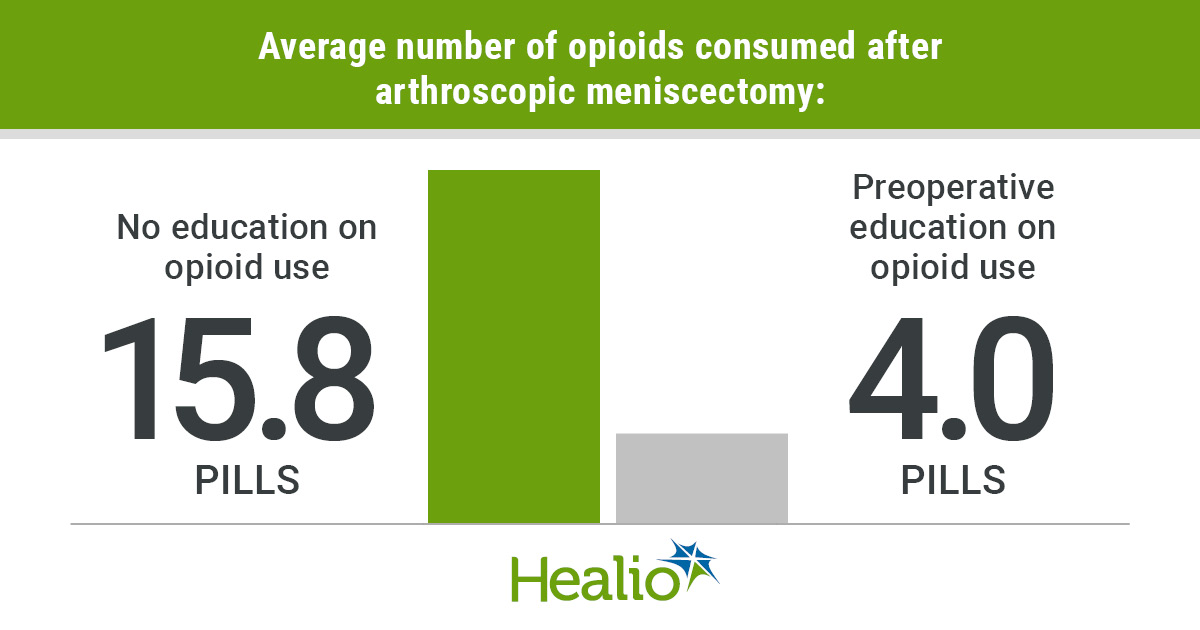Preoperative opioid education may reduce opioid consumption after arthroscopic meniscectomy
Published results showed a decrease in postoperative opioid consumption and the duration of when opioid pills are used after arthroscopic meniscectomy among patients who received preoperative opioid education.

Alexis C. Colvin, MD, of Mount Sinai Hospital, and colleagues categorized patients undergoing arthroscopic meniscectomy into two groups based on whether they received a standardized overview on postoperative opioid use. Researchers assigned patients treated at the beginning of the study to the no education group (n=32), and data collected were used to identify “normal” opioid prescribing and use practices to guide patients treated at the end of the study assigned to the standardized overview group (n=30). To determine the number of opioids taken, researchers surveyed patients weekly for 4 weeks after surgery. Researchers then analyzed and compared postoperative opioid consumption between the two groups.
Researchers prescribed an average of 42 opioid pills to patients in the no education group. Results showed patients in the no education group used an average of 15.84 opioid pills after surgery compared with four opioid pills used after surgery in the standardized overview group. Overall, researchers noted patients who received a standardized overview on postoperative opioid use after arthroscopic meniscectomy used 11.84 fewer opioid pills. This led to a 296% decrease in postoperative opioid consumption, according to results. Researchers found 21.9% of patients in the no education group and 3.3% of patients in the standardized overview group continued to take opioid pills 4 weeks after surgery.

“There are a number of ways that we, as orthopedists, can help reduce the number of opioids in circulation. First, we can utilize preoperative medications for pain, as well as regional and local anesthesia to help decrease postoperative pain,” Colvin told Healio Orthopedics. “Second, we can educate patients on the correct ways to take opioids (for severe pain) and how to manage their pain with nonopioid medications and modalities, such as ice.”
Colvin added the orthopedic community should continue to develop non-narcotic post-surgical pain management protocols for other surgeries.
“We can also continue to work with our anesthesia colleagues to develop perioperative pathways for post-surgical pain,” Colvin said.

